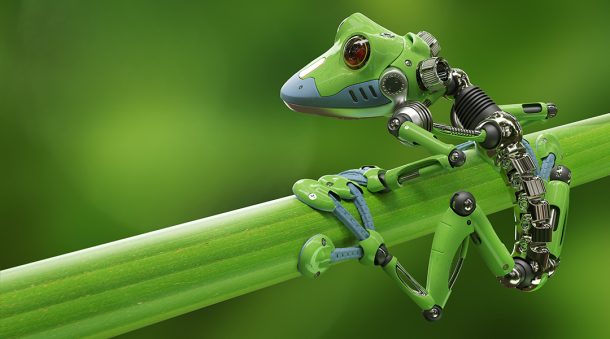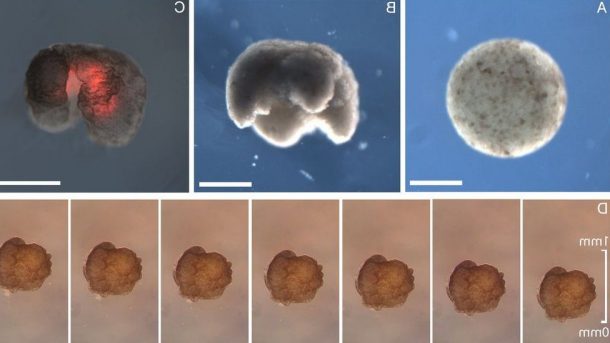
Ever wondered what living robots have can have the potential to do! Once robots get enough power to be self-reliant, the consequences can be disastrous. But these millimeter-sized robots are harmless creatures. Developed from frog cells using their embryos, these little programmable creatures can do a lot inside your body.
The initially designing was done on a supercomputer and then the biologists worked on the real prototypes. Adding technology to biology, the cells were transformed into programmable machines. What adds to their uniqueness is their ability to regenerate. Even if you cut them in half, there are possibilities that the cells are not destroyed completely and they can reform. The parent species is an African clawed frog, Xenopus laevis. The extraction of stem cells was followed by a period of incubation. A pouch was also formed inside the creatures to enable them to carry small loads while mobbing. They can push materials surrounding them and move in a pretty slow way.

Nothing far from what was once merely science fiction. These concept lying behind these delicate creatures can be reciprocated to form complex and more useful projects. And once the science went beyond human control, the expected behavior of these artificially created living bodies can be quite risky.
The applications are majorly, but not limited to, medical treatment procedures. To clear and clean arteries and blood vessels, Xenobots can play a significant role. You might feel like an army moving within you and guarding your complex circulatory system. From the perspective of a scientist involved in the research, the creation is “neither a traditional robot nor a known species of animal,” but a “new class of artifact: a living, programmable organism.”

The average life span of a single bot is up to 10 days and their shapes can vary. Adding more to the benefits of teeny beings, they can assist in cleaning oceans and seas as well. They can peek into areas small enough to be accessed by a human directly. And then they can be programmed to reach the desired target.
One side of the story reflects the positive milestones this breakthrough can achieve in the future, including imaging microscopic areas in an easy way or getting inside the complicated structured human beings easily. But on the other side, the limits are yet to be defined. What are the legal constraints of inventing organic robots? What are the long term cons? And which applications of such creatures are to be restricted from the very start so that the technology doesn’t get exploited.


